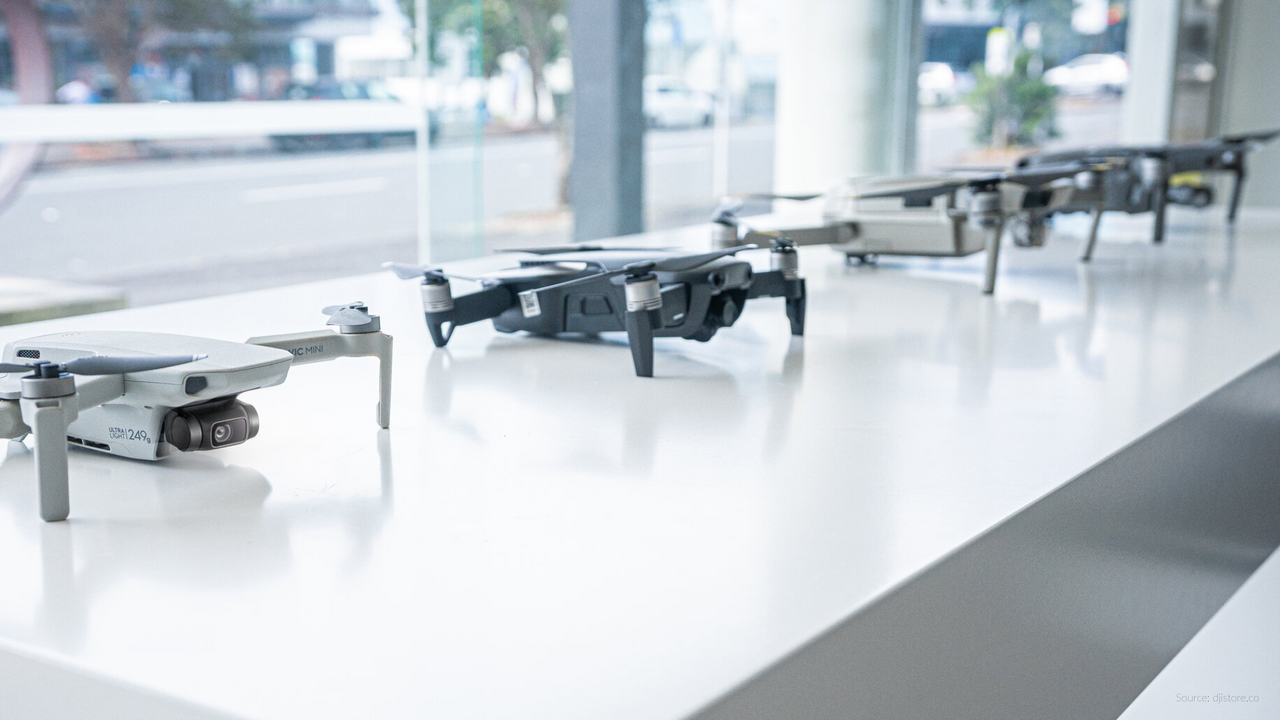Upgrade Time

Like many people I speak to, my first drone was nothing to brag about. I think it was Christmas of 2014 and a small camera drone from RadioShack was one of my stocking stuffers. It had a flight time of two minutes, grainy footage, and it wasn't easy to control. I captured one picture of my roof before my dog saved our family from the flying menace and, with the chomping of his jaws, prevented any further flights.
Although my dog got more out of the drone than I did, I was now interested in drones. Future purchases included a Parrot Bebop, Parrot Mambo, and Parrot Swing before my first commercial drone (for the time), the DJI Phantom 3 Standard. Once I started to purchase DJI drones, everything I bought was for my business.
After the first few purchases for my company, I realized innovations in the UAV industry were moving fast. Within a year of purchasing the first drones for my company, newer and better drones were already on the market. My drones were still capable of the work I was doing, but it got me thinking. When was the right time to upgrade my drones?
After considering it, I came up with some good reasons to invest in newer technology. My list included chasing different work, customer demands, making life easier, and it made financial sense.
Chasing Different Work
Not all drones are created equal. As your work changes, you will need different drones or at least different payloads. For example, let's say you have been working in real estate photography and are interested in the thermal inspections of roofs. Your RGB camera drone probably won't have a thermal camera. You’ll need to upgrade to a drone with a thermal camera. Chasing new types of work could be a good reason to upgrade.
Customer Demands
As the saying goes, the customer is always right. This is usually true, and it could be a good reason to invest in a drone upgrade. I was once contacted to fly several cell tower inspections around Los Angeles. At the time, I was flying a DJI Mavic 2 Pro for most of my work. The client was willing to pay me $150/tower but insisted I fly a DJI Phantom 4.
I tried to explain that the Mavic 2 Pro was just as capable and safer than the Phantom 4. It had improved obstacle avoidance features, and the cameras were pretty much the same. The client said the cell company would only let me fly a Phantom 4 because "that was a drone they trusted."
I ended up passing on the gig even though there was more than enough profit in the project to cover the cost of the Phantom 4, especially on the used market. I thought the company would be a real pain to work with if they wouldn't listen to my opinion as the pilot. Still, this would have been a good time to upgrade (or downgrade) based on the customer's needs.
The Easy Life
One of the great things about UAV technology is the improved user experience as time goes on. Some of the first commercial drones were very difficult to control. The range was poor and keeping the drone steady was more art than science. Imagine trying to get a spiral orbit as the drone rises manually. It's not as easy as it looks.
Additionally, getting good footage also required some knowledge of photography, such as lighting concerns, shutter speed, ISO, etc. As new drones have come out, everyone can get great shots without taking the time to understand these things.
If the drone you are flying is a bit frustrating, and a new drone has features that address your frustration, it may be time to upgrade.
Making Good Financial Decisions
A final reason is if it just makes good financial sense. Like all equipment, drones wear down with time. Batteries don't hold as much of a charge, the mechanical aspects of the UAV may become a little less dependable, parts may become obsolete, and those few times you dropped the remote may be starting to take their toll. As your drone ages, it may cost you work or produce less than acceptable images. The money you are saving by keeping your old drone may be costing you much more than you think.
There are many reasons why you should consider an upgrade for your commercial drone. Just like your other business choices, like setting prices and marketing your services, upgrading a drone should be a well-thought-out decision. Make sure to weigh out the pros and cons, and when in doubt, seek the advice of an expert. Stay safe out there, and happy flying!
Article Written by David Daly


